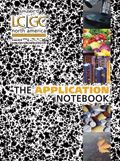Heparin Characterization
Heparin is well-known as an anticoagulant, antithrombotic drug. Chemically, it is a linear polysaccharide that is derived from animal tissues. For some time it has been known that heparin is not a homogeneous substance; rather, it is a heterogeneous mixture of molecules ranging in molar mass from less than 5,000 to more than 30,000 Daltons.
Heparin is well-known as an anticoagulant, antithrombotic drug. Chemically, it is a linear polysaccharide that is derived from animal tissues. For some time it has been known that heparin is not a homogeneous substance; rather, it is a heterogeneous mixture of molecules ranging in molar mass from less than 5,000 to more than 30,000 Daltons. Heparin can be chemically or enzymatically depolymerized to obtain low molecular weight (LMW) heparin products, which exhibit an improved pharmacological profile.
The U.S. Food and Drug Administration (FDA) has scrutinized LMW-heparin products closely due to their inherent variability and polydispersity. Previously, these materials had to be characterized by relative techniques involving viscometry or standard elution-based chromatographic methods. Fortunately, the advent of multi-angle laser light scattering combined with SEC means that authentic calibration standards derived from heparin are no longer necessary. LMW-heparins may now be characterized absolutely—without regard for the molecules' elution time or conformation in solution.

Figure 1
For this application note, Scientific Protein Laboratories (Waunakee, WI), a subsidiary of American Home Products Corporation, analyzed three commercial LMW heparin products. They employed a Waters 510 pump and 401 refractometer, a Shodex OHpak SB-803HQ analytical column (8.0 × 300 mm) with an SB-G guard column, and a miniDAWN, triple angle light scattering instrument. The mobile phase was 0.1 M ammonium acetate, and the specific refractive index increment, dn/dc was measured off-line in a Wyatt/Optilab DSP operating at the same wavelength as the miniDAWN. Details of this study were published in Analytical Biochemistry 245, 231–241 (1997).
The results show unequivocally the power of the miniDAWN to resolve the three LMW-heparin products, each of which was manufactured by a different depolymerization process. Wyatt Technology's ASTRA software indicates that clear differences exits in these products' differential molar mass distributions (Figure 2).

Figure 2
We sincerely thank James Knobloch and Dr. Patrick Shaklee, Scientific Protein Labs, for sharing these data with us and permitting us to publish their results.

Wyatt Technology Corporation
6300 Hollister Avenue, Santa Barbara, CA 93117
tel. (805)681-9009; fax (805)681-0123
Website: www.wyatt.com

SEC-MALS of Antibody Therapeutics—A Robust Method for In-Depth Sample Characterization
June 1st 2022Monoclonal antibodies (mAbs) are effective therapeutics for cancers, auto-immune diseases, viral infections, and other diseases. Recent developments in antibody therapeutics aim to add more specific binding regions (bi- and multi-specificity) to increase their effectiveness and/or to downsize the molecule to the specific binding regions (for example, scFv or Fab fragment) to achieve better penetration of the tissue. As the molecule gets more complex, the possible high and low molecular weight (H/LMW) impurities become more complex, too. In order to accurately analyze the various species, more advanced detection than ultraviolet (UV) is required to characterize a mAb sample.














